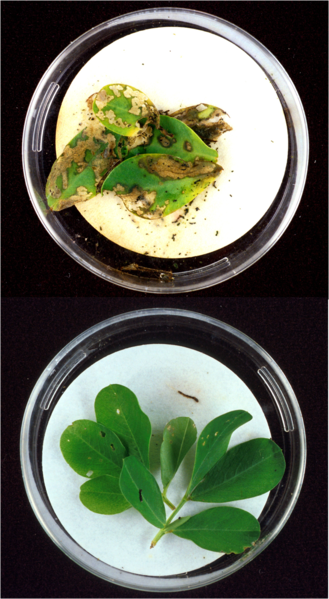Research that took place at the University of Lund in Sweden shows that genetic changes can occur naturally even between plants growing in the wild, and that different species can exchange genes between them.

In many parts of the world you can find a heated debate concerning the question of genetically modified plants. The supporters of genetic engineering believe that the upgraded plants will be able to solve the problems of hunger and drought in the world, which will only get worse with global warming. The opponents of genetic engineering claim, among other things, that it is forbidden to mix genes between different species, and that this is unnatural.
is that so?
Research that took place at the University of Lund in Sweden shows that genetic changes can occur naturally even between plants growing in the wild, and that different species can exchange genes between them. This is a type of completely unintentional and random genetic engineering - and maybe it's better not to call it engineering at all - but the genes still jump from one plant to another.
The research group, which focuses on evolutionary genetics, discovered that the gene encoding the PGIC enzyme was transferred from a species of herbaceous plant, most likely Poa Palustris, to another herbaceous plant of the species Festuca ovina. The DNA traces also show that a small part of the chromosome was also transferred. This is the first proven case of transferring genes with known activity from the nucleus of one higher plant to another.
"Unfortunately, we don't know exactly how the gene jump happened between the species, which is not surprising since the event occurred perhaps 700,000 years ago. The most likely explanation is that the gene was transferred by a parasite or a disease agent such as a virus, and perhaps with the help of an insect that sucked up the sap of the plant," said Professor Bengtson, the research supervisor.
If genes jump naturally between plants belonging to different species - and as we know today, also between parasites and other organisms living in the neighborhood and within the same plants - what does this mean regarding genetic engineering in plants? It is clear that it can no longer be dismissed just because it is an 'unnatural' act. At the same time, I believe there is room for the application of restrictions and reviews on genetic engineering in plants in order to prevent an ecological and/or health disaster.
And last but not least - I never stop admiring the beauty of the natural world around us. We thought we invented genetic engineering? It has always existed in nature, in a random and uncontrollable way. And yet, once in a few hundred-thousand years, she manages to transfer an active gene between species. When I read about these discoveries, I go back to the movie 'Avatar' and the world of Pandora. It was a planet where there was a real Mother Nature who could guide and direct the course of things. I suppose she could also carry out genetic engineering at will, by similar means. In our planet, unfortunately and for my benefit, there is no such god, but there is still a chance to reach harmony. We humans have to take the reins in our hands and be our own gods, despite all the dangers. Because if we don't do it, the only god that will control us will be blind fate.

4 תגובות
Yossi Yaari "grows wild" means grows without control.
Growing in the wild means growing in the wild (uncultivated) vegetation.
in the wild
This proof is important beyond the "kosher" genetic engineering. It teaches about the transfer of genes between species without reproductive means. Evolution preserves this feature whether it improves or does not impair survival. A new species can also spawn.
Why when "I read about these discoveries, I go back to the movie 'Avatar' and the world of Pandora."
Perhaps studies of this type and similar imply that there is indeed a deliberate genetic intervention?
There are other examples of horizontal transfer,
For example, they gnaw on plants. Insects that genetically engineer the host plant and cause it to produce a "growth" in which they raise their offspring.
exists in aphids and wasps.
It may very well exist in other organisms...
Interesting article.
Just one note concerning the Hebrew: "Galem wild" (and not "Galem ba ba"). At first I thought you meant they "grow in Peru" and you just made a typo. When the thing changed I realized the error.